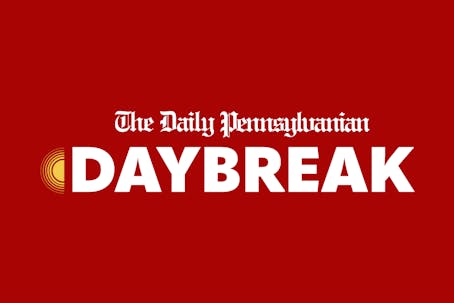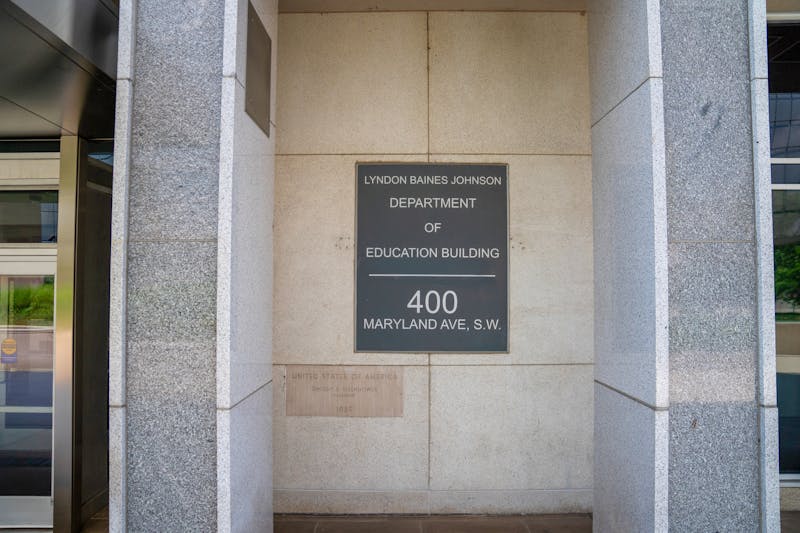
Wharton sophomore Nia Matthews (left) and College sophomore Musab Chummun (right) were elected as the Undergraduate Assembly’s next president and vice president (Photo Courtesy of Erica Wiguna).
Wharton sophomore Nia Matthews and College sophomore Musab Chummun will serve as the Undergraduate Assembly’s next president and vice president.
Matthews was elected president by a vote of 1,169 to 964 over College junior and former Daily Pennsylvanian staffer Nicole Muravsky, and Chummun was elected vice president with 1,319 votes. The Nominations and Elections Committee announced the results on April 15 at 10 a.m. after voting closed on April 10 at 10 p.m.
In a statement to the DP, Matthews described the campaign as “one of the most strenuous and intense, yet meaningful processes of [her] life.” Chummun similarly wrote that the experience was “one of the most exhilarating, eventful, and moving things” he had ever done.
This spring’s election also decided leaders for the 2026, 2027, and 2028 Class Boards. Wharton junior Vedika Jawa, College sophomore Natasha Kobelsky, and College first year Mert Kayabas were elected as the presidents of the 2026, 2027, and 2028 Class Boards, respectively.
The results were released after NEC convened a hearing on April 14 to investigate a complaint raised by an anonymous student against UA presidential candidate and College sophomore Nicholas Kwok, who previously served as vice president of internal affairs for the 2027 Class Board, and vice presidential candidate and College first year Leo Ding, who served as vice president of internal affairs for the 2028 Class Board.
The complaint alleged that Kwok and Ding violated the NEC’s Fair Practices Code while campaigning. Following the hearing, the NEC determined that both candidates had violated the FPC and removed them from ballots.
“While I’m disappointed with the outcome of the hearing, I respect the NEC’s role in overseeing the process,” Ding wrote in a statement to The Daily Pennsylvanian. “I appreciate everyone who supported me throughout the campaign. For now, I’m taking time to reflect, and I look forward to continuing to contribute to the Penn community.”
Matthews and Chummun ran on a platform — coined “A Proven Penn” — centered on delivering practical change through experienced leadership, student-focused budgeting, renewed commitments to diversity, equity, and inclusion and wellness efforts, and a push for greater transparency in student governance.
Throughout the campaign cycle, both candidates highlighted the importance of continuing the UA’s legacy of tangible, student-driven improvements. Their platform emphasized “small projects” created by UA members that “created lasting change” while also promising to “[scale] up big-picture advocacy.”
“After two years in the UA, including time on the Executive Board and Cabinet, I’ve built strong relationships with administrators and developed a deep understanding of how things work behind the scenes,” she wrote. “I want to use that experience to help student groups navigate challenges and ensure their voices are heard.”
Matthews similarly emphasized her goal of reshaping how students perceive the UA and what it can accomplish. She explained that she aims to make student government more visible and accessible.
“Students should know about student government from the moment they step foot on campus, and recruiting efforts will be high this fall,” Matthews wrote.
Looking ahead, both Matthews and Chummun reflected on the shared commitment that they plan to bring to their roles.
“Nobody has all the solutions, but I am confident that Nia and I can work together to navigate an ever-changing environment to find needed answers,” Chummun wrote.
“I’m excited to continue working alongside the many student groups who have supported us,” Matthews added. “There’s power in numbers, and I truly believe we can accomplish so much together.”
The NEC previously hosted two debates — one on April 2 and another on April 9 in the McNeil Building — where the UA presidential and vice presidential candidates explained their platforms and plans for the roles.
The Daily Pennsylvanian is an independent, student-run newspaper. Please consider making a donation to support the coverage that shapes the University. Your generosity ensures a future of strong journalism at Penn.
Donate







